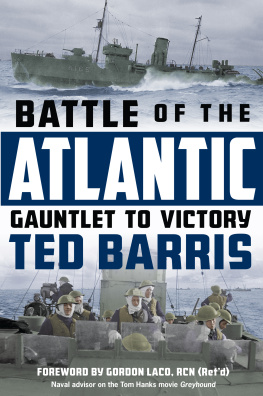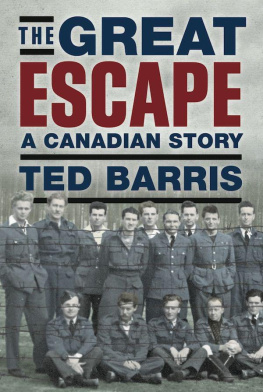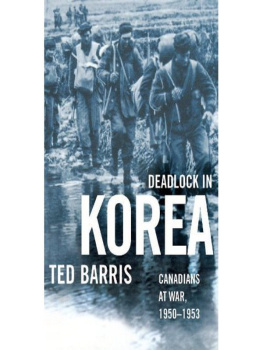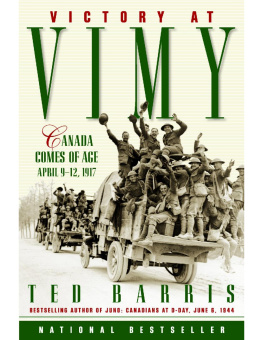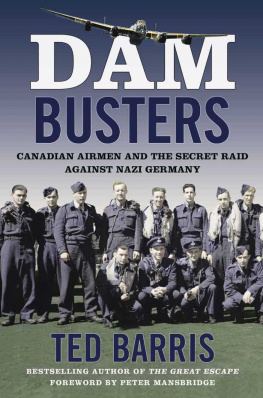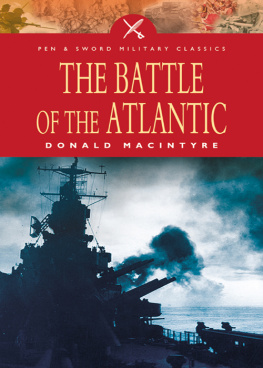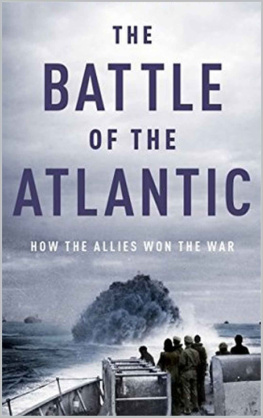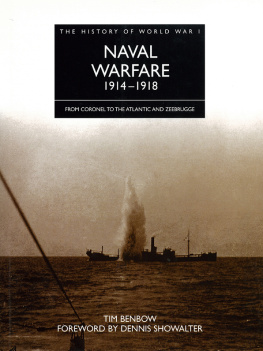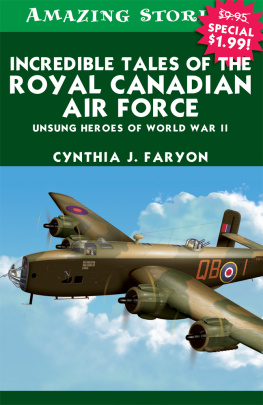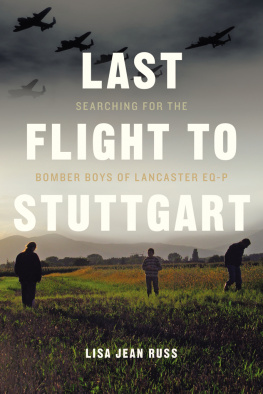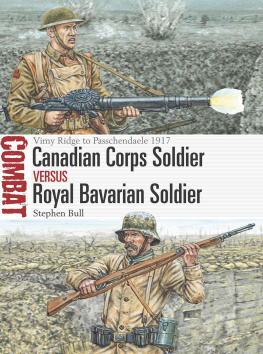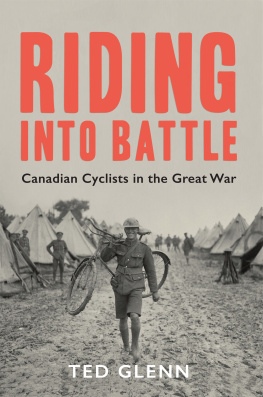W HEN T ED B ARRIS INVITED ME TO CONSIDER writing the foreword for this book, I was honoured. I am familiar with his work, having utilized his books as a valuable resource in my own career as a military historian working in film and television. Ive come to rely on his veracity and thoroughness.
Something I am proud to share with Ted Barris is a reverence for the stories of veterans. Barriss work is hallmarked by thorough research and respect for the people whose stories he retells. I have built a career guiding film and television productions and do my best to apply a similarly high ethical standard of recording faithfully what veterans tell us. Those of us who retell those stories, both filmmakers and authors, have a heavy responsibility to tell them well. It is no joke to say I felt them looking over my shoulder. It is true; we do feel them there.
When working as naval advisor on Tom Hankss production of Greyhound, a feature film based on real events during the Battle of the Atlantic, I was pleased to be part of a team whose leadership, especially Mr. Hanks himself, wanted to get it right. We truly felt those men and women looking over our shoulders as we choreographed the action sequences, explained the realities of various weapons to the CGI artists, and described how people lived and died at sea during those terrible years. Having served eleven years as an officer in the Royal Canadian Navy myself, I certainly felt my forebears watching us.
As I have done on other productions, I offered the starring actor a talisman from that era to help him feel the ethos of the time he was portraying. I told Mr. Hanks the story of a good friend, Bill, and handed him a small brass navigators charting tool that Bill had used in the war and left to me. Youll see that small round protractor on the wheelhouse chart table whenever the chart is visible in the film. Hanks put it there purposefully as a salute to the real people whose courage and suffering we did our best to depict faithfully. After reading this book, I know, as you will, that Ted Barris understands all of this, and certainly feels it too.
Id like to share Bills story with you, too.
Some years ago, I was honoured to join Bills family as they held a vigil for him near the end of his life. Bill had served in the Royal Canadian Navy over the course of a career that stretched from hard service during the war years of the Battle of the Atlantic through almost equally hard service on ice patrol duty and various Cold War assignments. Bill retired from the navy shortly after the unification of the army, navy, and air force into the Canadian Armed Forces and began a new career in Ontarios historic site service, which is where I met him.
Bill never talked about the Battle of the Atlantic during the years I knew him, except for a few funny stories and anecdotes. But when the chips were down near the end of his life, he began talking. I was deeply moved as I listened to his experiences of actions and ships whose dates and names I was already familiar with from reading, but hearing the stories from Bill, speaking from his hospital bed in his low voice, brought inescapable reality to them in a way that was quite terrible.
As a military historian, I knew the mechanics of how submarines were hunted and sometimes sunk during the Battle of the Atlantic, but one afternoon I listened to Bill describe the death by inches that was more common than the masterstroke cataclysm of which writers of fiction are so fond. He told me what the long hunt was like; the realization that the damaged submarine was no longer being careful about being quiet; how they could hear it running its motors faster, presumably as it tried to use its diving planes to resist descending as it became heavier due to the leaks. A submarine flies in the depths the way an airship flies in the air. It must keep near neutral buoyancytoo heavy and it can fall out of control. Bill told me theyd hear it pumping, bailing bilges that were filling from myriad small leaks into a buoyancy tank; then theyd hear the tank being blown out by compressed air, and then the motors running very hard at full speed, propellers desperately thrashing. And after more desperate loud and hard blowing, a hard crunch would be heard as the submarine was crushed by the great pressure of the sea at tremendous depth.
That particular last struggle lasted for nearly an hourafter nine hours of hunting, during which dozens of depth charges and Hedgehog projectiles had been expended on the submarine. Finally, large bubbles of air and oil would come to the surface, along with smashed woodwork and human remains. Lungs, entrails, a body.
In history books and the official record, the destruction of this particular U-boat receives only a couple of lines. But for Bill, it was an ordeal that stayed with him all his life. He wept on his pillow at the memory of it. History is more than facts and dates; it is human memory and emotion.
This book will serve to put faces and emotions on the facts and dates of the Battle of the Atlantic, the longest campaign of the Second World War. The battle was waged for nearly six years2,074 days. In human terms, that period represents five North Atlantic winters; thousands of bleak dawns, thousands of days and nights of vigilance despite desperate fatigue; thousands of days and nights during which death might arrive unheralded.
The Royal Canadian Navy lost twenty-four warships, which took 2,000 of their people down with them. Canadas Merchant Navy service lost fifty-eight ships, which took over 1,100 of their people down with them. Despite this, the Allied navies escorted a total of 25,343 merchant ships across the wide Atlantic.
Canadians are justifiably proud that the challenge placed before us was met and surmounted. We had no choice; this fight had to be won, or the war was lost. In just six years, Canada mobilized her naval service from a tiny peacetime seed to become the third-largest Allied navy in the world in 1945. Among the Allies, Canada was the nation with proportionally the largest percentage of its population in uniform as volunteers fighting to return peace to the world.
Much has been written about the various actions and strategies of the conduct of the war, but this book will clothe those dry facts in the lived experiences of the men and women who endured those horrors and triumphs. Each of these individuals felt fear and conquered fear; they kept faith, practising astonishing resilience even during the darkest days when victory seemed terrifyingly remote.
As I think about my friend in his last days, I remember that he told me how he hated the warhow he hated it for robbing him of the carefree youth he should have enjoyed. He told me how deeply he regretted the deaths he witnessed and the killing he participated in. But he also told me how proud he feltfulfilling his duty when Canada called, joining such a professional service, and having fought the good fight.
I read some time ago that the rate of attrition among still-living veterans of the Second World War has now surpassed their casualty rates during the hottest periods of the war. Not many are around to tell us what they saw and felt anymore. This book effectively, reverentially, and thoroughly records and passes on those memories. Perhaps one of the most powerful ways to keep peace in the world is to hold on to the memory of how hard won peace truly is. Sadly, peace does not yet come without a price.
Gordon Laco
Senior Communications Advisor, Royal Canadian Navy

